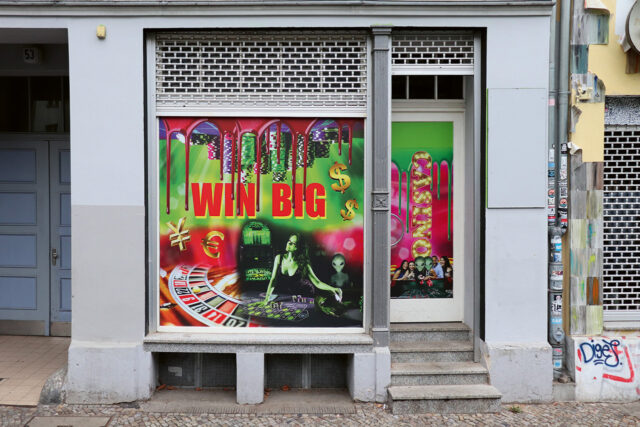2011
Naunynstraße
53
Berlin
10999
Der 2011 gegründete Projektraum wird von Heiko Pfreundt und Lisa Schorm betrie-
ben. Der Raum dient der Entwicklung und Ausstellung von experimentellen künstlerischen, kuratorischen und kunstvermittelnden Projekten. Aus dem zwischen 2011 und 2016 wöchentlich stattfindenden Ausstellungsrhythmus, ist in den letzten drei Jahren eine Struktur aus inhaltlich zusammenhängenden Ausstellungsreihen und Aktionen hervorgegangen, welche sich als fluides,
durchlässiges und kollaboratives System begreift und mit spielerischen Eingriffen und sequentiellen Ausstellungskonzepten an einer ständigen Erweiterbarkeit und Re-Dramatisierung des Ausstellungsraumes und seiner Umgebung interessiert ist.
ben. Der Raum dient der Entwicklung und Ausstellung von experimentellen künstlerischen, kuratorischen und kunstvermittelnden Projekten. Aus dem zwischen 2011 und 2016 wöchentlich stattfindenden Ausstellungsrhythmus, ist in den letzten drei Jahren eine Struktur aus inhaltlich zusammenhängenden Ausstellungsreihen und Aktionen hervorgegangen, welche sich als fluides,
durchlässiges und kollaboratives System begreift und mit spielerischen Eingriffen und sequentiellen Ausstellungskonzepten an einer ständigen Erweiterbarkeit und Re-Dramatisierung des Ausstellungsraumes und seiner Umgebung interessiert ist.

THE INFINITE GAME – a 23 hours live action, 2018, Foto: Heiko Pfreundt

Tracey Snelling, Ausstellung: MMXXI, 2018, Foto: Heiko Pfreundt